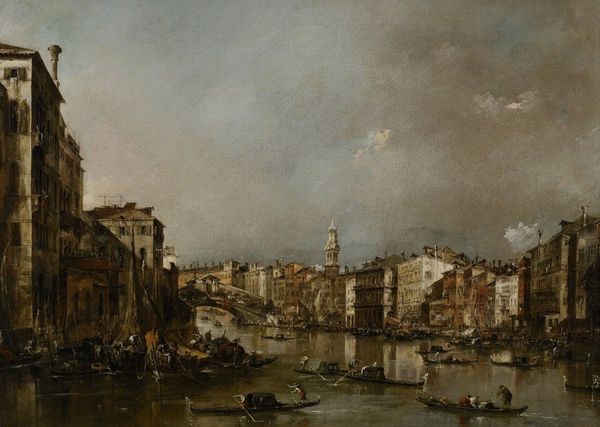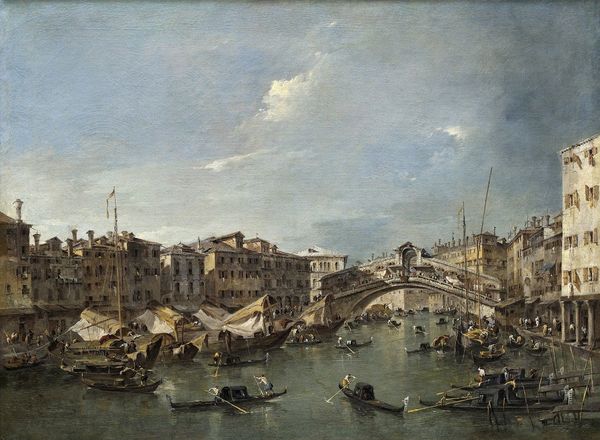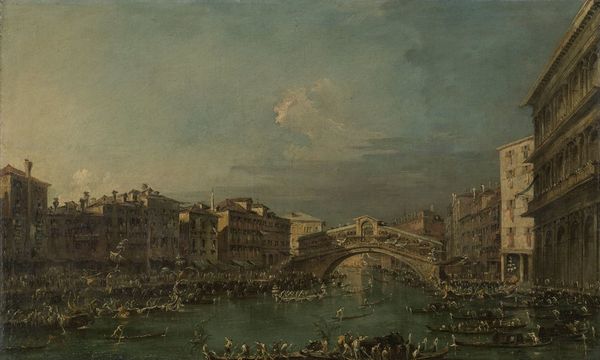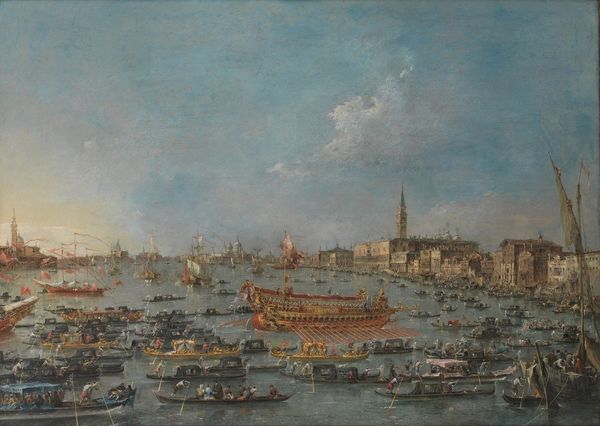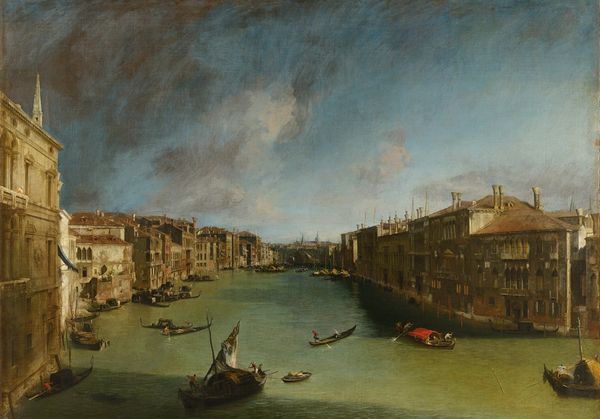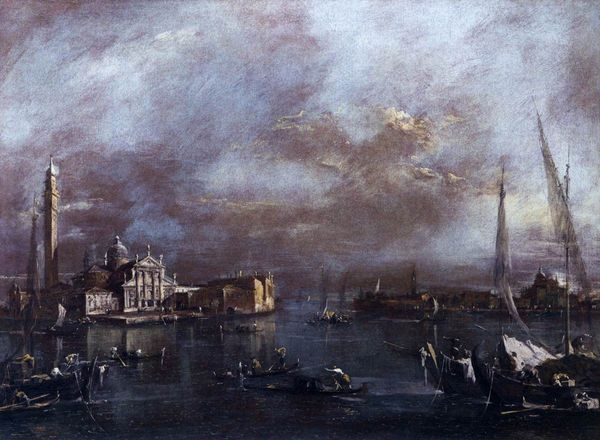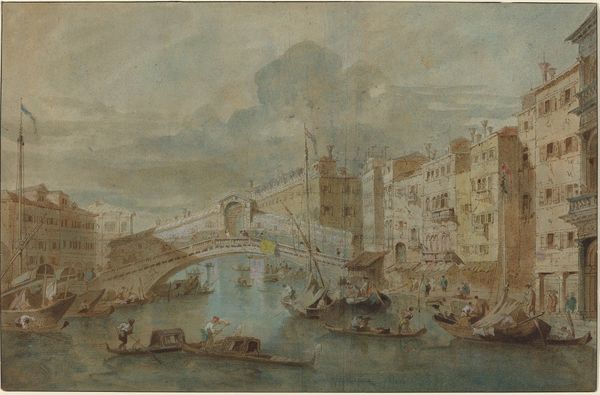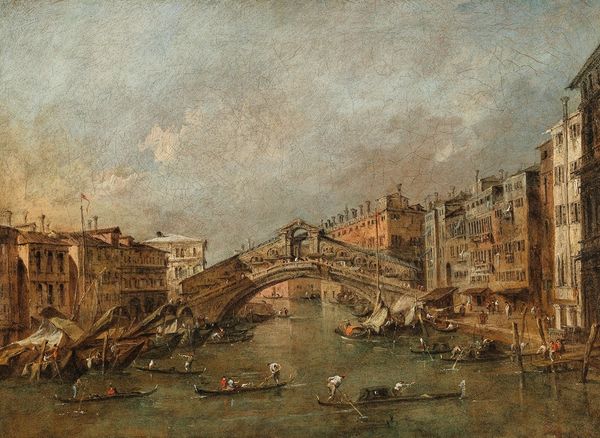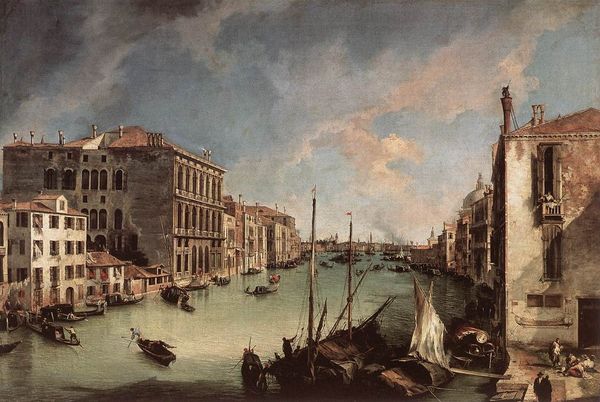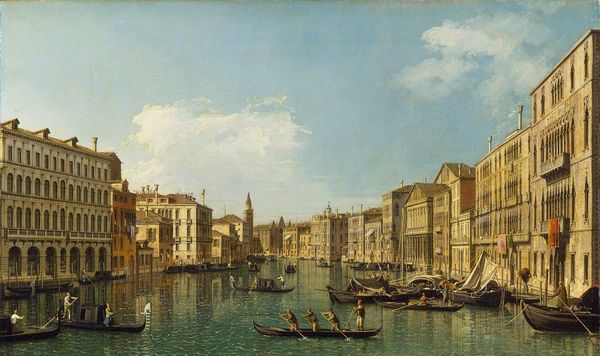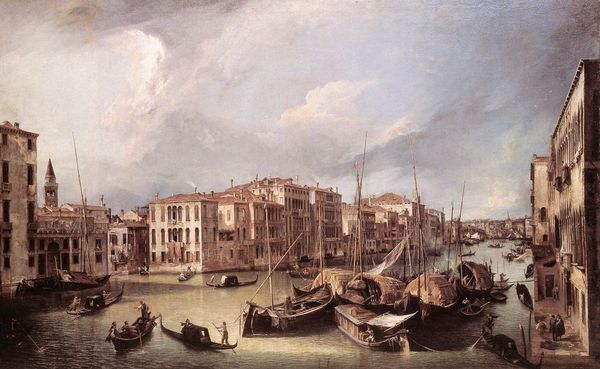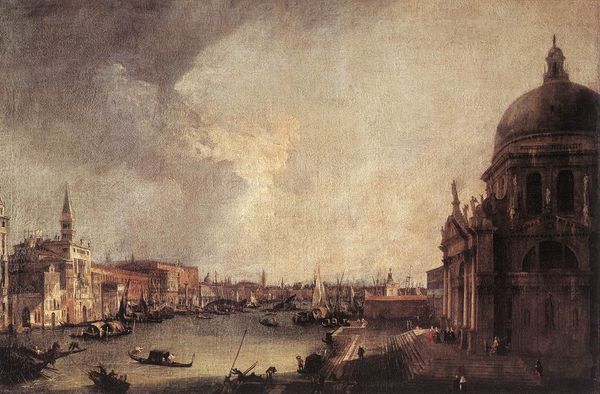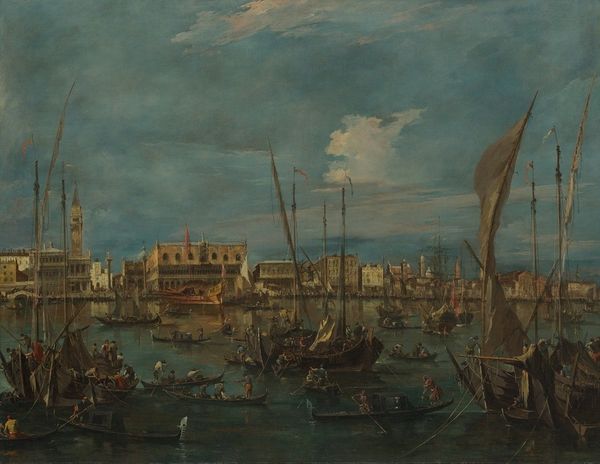
Copyright: Public Domain: Artvee
Editor: This is Francesco Guardi's "View of the Grand Canal from the Ponte di Rialto," painted after 1775, using oil paint. It's quite a dynamic cityscape; what strikes me is how the dramatic sky looms over the hustle and bustle below. How do you interpret this work? Curator: It’s a fascinating snapshot of Venice, isn’t it? Look at how Guardi captures the theatrical quality of Venetian life. Light becomes a symbolic element. It breaks through those brooding clouds. But does it represent divine grace or something more secular – perhaps the Enlightenment spirit of observation? Notice, too, how he positions the viewer. Editor: Yes, it feels as though we're part of the scene, almost on stage ourselves. The bridge is implied rather than seen, which puts us right in the midst of everything. Curator: Precisely. Guardi plays with perspective, inviting us into Venice’s vibrant theatre. He invites a visual participation – how does that placement shape your interpretation? Look too at the gondolas: what emotional meaning do they suggest to you as a symbol? They have become ubiquitous with Venice. Editor: They certainly add to that sense of romance and history. It seems he’s immortalizing not just a place but also a feeling, a cultural identity. They evoke the unique geography of Venice. Curator: And identity is exactly what he evokes. Consider, too, how colour works here. It is a Venetian icon that represents memory and nostalgia but perhaps too wealth. What overall atmosphere would you say Guardi establishes through the use of colour and light? It's a masterful exercise of cultural memory! Editor: I hadn't considered the colours so much. That broader context makes me appreciate the artwork on a deeper level. Thank you for shedding light on these elements! Curator: A great consideration and thought, I believe that I now see the colours differently as well.
Comments
No comments
Be the first to comment and join the conversation on the ultimate creative platform.
